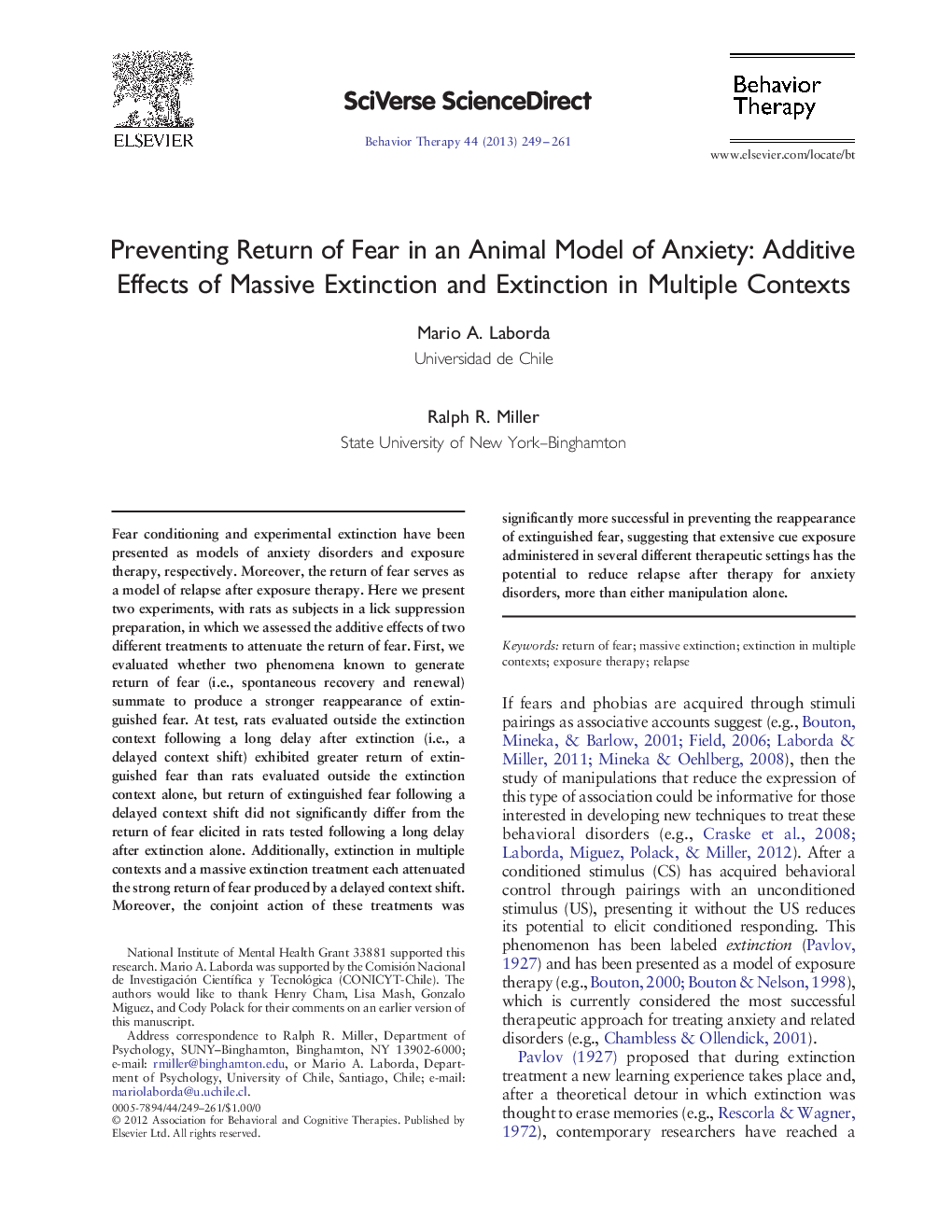| Article ID | Journal | Published Year | Pages | File Type |
|---|---|---|---|---|
| 901304 | Behavior Therapy | 2013 | 13 Pages |
Fear conditioning and experimental extinction have been presented as models of anxiety disorders and exposure therapy, respectively. Moreover, the return of fear serves as a model of relapse after exposure therapy. Here we present two experiments, with rats as subjects in a lick suppression preparation, in which we assessed the additive effects of two different treatments to attenuate the return of fear. First, we evaluated whether two phenomena known to generate return of fear (i.e., spontaneous recovery and renewal) summate to produce a stronger reappearance of extinguished fear. At test, rats evaluated outside the extinction context following a long delay after extinction (i.e., a delayed context shift) exhibited greater return of extinguished fear than rats evaluated outside the extinction context alone, but return of extinguished fear following a delayed context shift did not significantly differ from the return of fear elicited in rats tested following a long delay after extinction alone. Additionally, extinction in multiple contexts and a massive extinction treatment each attenuated the strong return of fear produced by a delayed context shift. Moreover, the conjoint action of these treatments was significantly more successful in preventing the reappearance of extinguished fear, suggesting that extensive cue exposure administered in several different therapeutic settings has the potential to reduce relapse after therapy for anxiety disorders, more than either manipulation alone.
► Fear conditioning in rats to model anxiety, extinction to model exposure therapy, and return of fear to model relapse ► Return of fear was facilitated by change of context from extinction to testing and a delay in testing ► These two effects summated to produce more robust return of fear than renewal alone ► Massive extinction and extinction in multiple contexts each attenuated this robust reappearance of fear ► These two manipulations in compound summated to reduce return of fear more than either treatment alone
